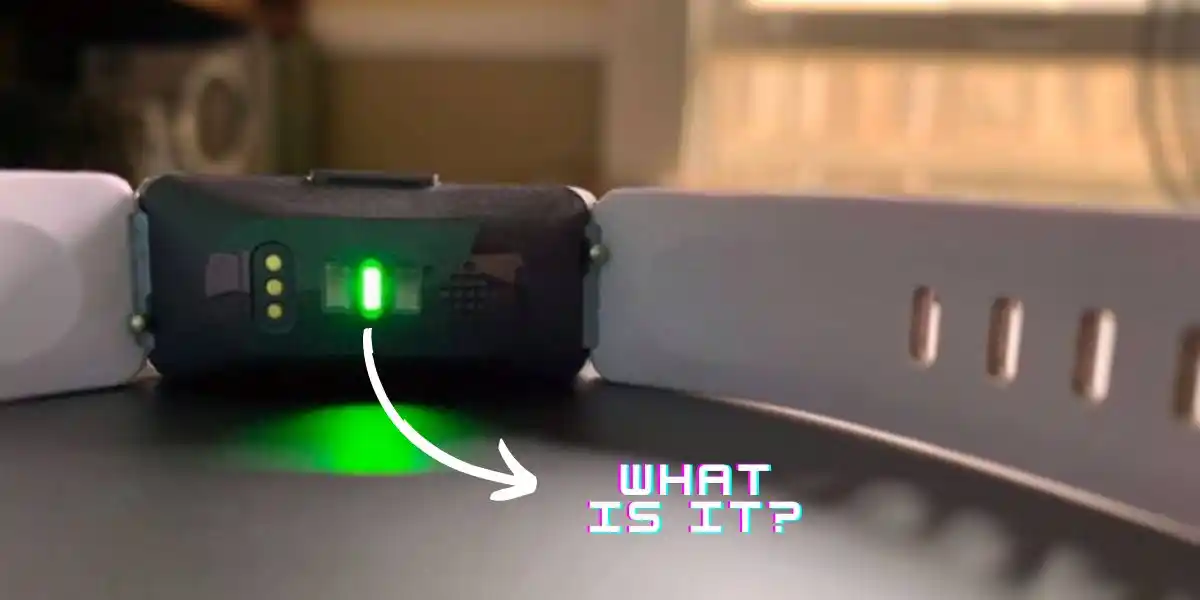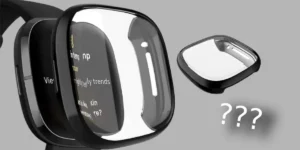Fitbit users may see green lights on their watches from time to time. Even though this is normal, it may be helpful to know what they’re for, what they do, and how to turn them off.
In addition to the green light on Fitbit watches, you may notice a red light flashing on the back. If you aren’t sure about it, it leads many people to assume that the red light means something wrong.
This isn’t true at all.
Green light flashing on the back of your Fitbit usually indicates the device is continuously monitoring your heart rate. On the other hand, the sensors shine red when your watch measures your SpO2 levels while you’re asleep, estimating how much oxygen is in your blood.
With this guide, we’ll dive deep into the meaning of these Fitbit lights, and show you how to turn them off.
Table of Contents
What does the Green Light on Fitbit Mean?
If you are curious about the green Light on the Fitbit watch, then know it is completely harmless.
Fitbits come equipped with sensors on the back and complex algorithms that allow them to collect and analyze information about your health using several metrics. With this, users can monitor their heart rate, their SpO2 levels, and how much physical activity they perform each day.
If you look at the underside of your Fitbit, you will see LEDs that light up to indicate specific health metrics.
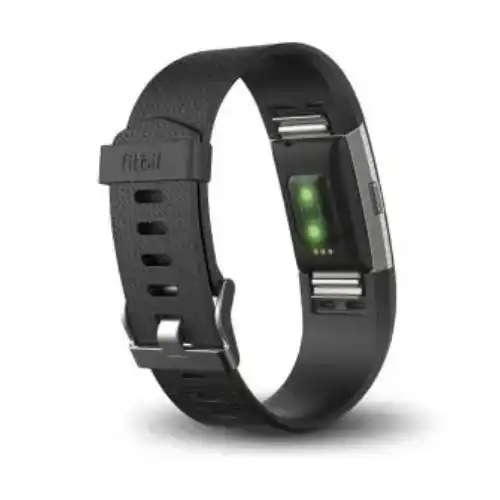
To put it in a nutshell, the green lights on your Fitbit’s back shine when your device is monitoring your heart rate. It is possible to turn them off, but then they will not be able to track your heart rate.
The Technology behind the Green Light Flashing On Fitbit
The majority of popular devices, like Fitbit, use Photoplethysmography to monitor heart rate or PPG.
They are indicated by having a green LED in the sensor area. When you enable the “Heart Rate” function in Fitbit’s companion app, the device will automatically start monitoring your heart rate for 24 hours.
Here Is How It Works?
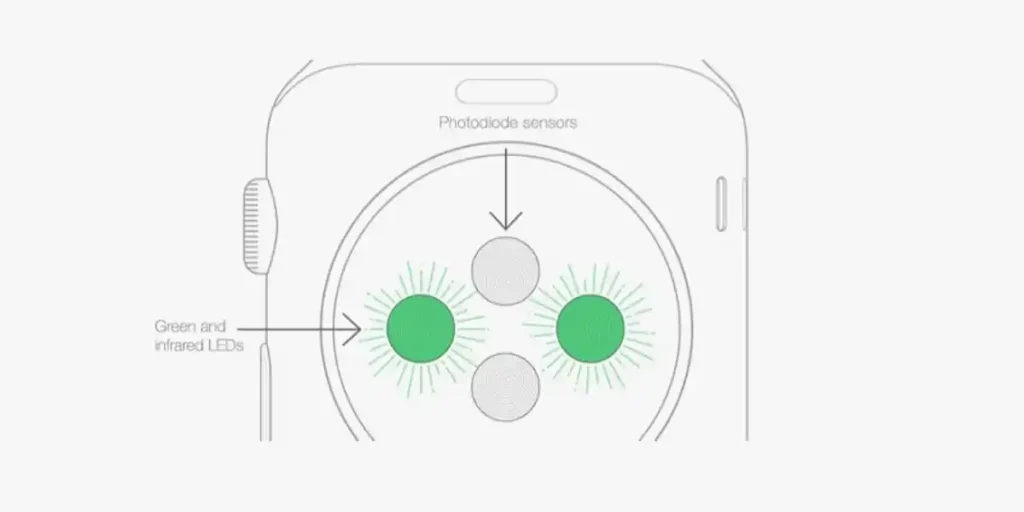
Fitbit measures blood flow using light.
As a matter of fact, the amount of blood in your wrist increases and decreases as your heart beats. Also, the blood absorbs light, Fitbit’s sensor shines a green light on the skin while photodiodes measure how much light is absorbed. The rise and fall of the absorption signal represent each heartbeat, and this gives you an indication of how many times your heart beats per minute.
Why the Green Light, not Other Colors?
Since the absorption rate of green light in the blood is highest, the data is fairly accurate.
How to turn off the Green Light on Fitbit?
Here are the steps to turn off the green light on your Fitbit watch:
- Tap on the Account icon appearing on your Fitbit app dashboard.
- Go to your profile and browse the Settings.
- Now, click on the Heart Menu from the drop-down and choose ‘off.’
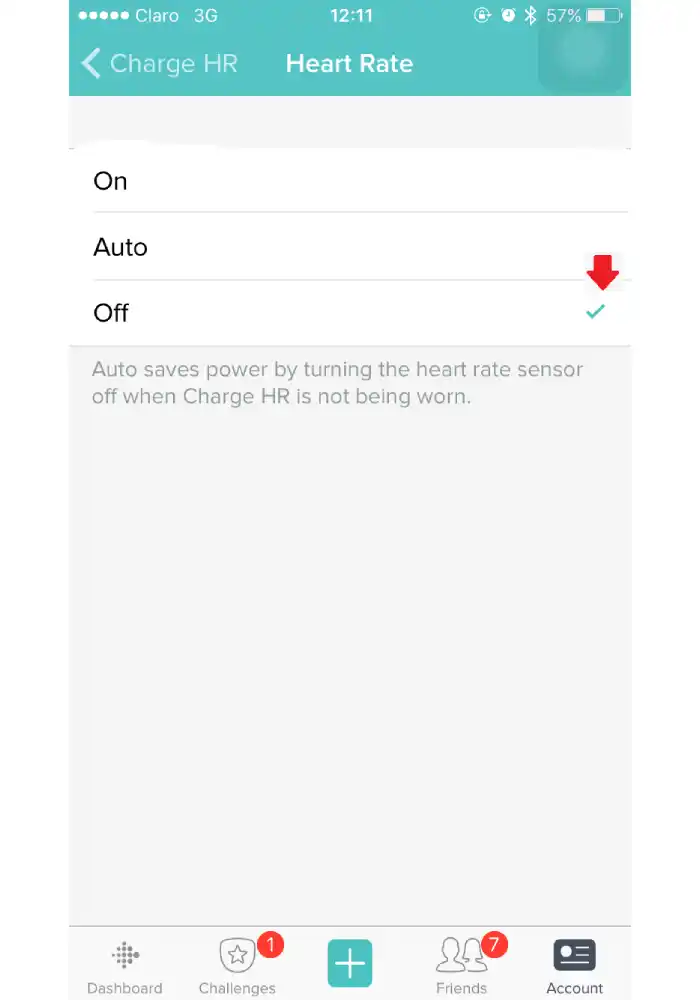
However, please remember that once you turn this feature off; your watch will no longer be able to measure your heart rate.
Are the Green Lights on Fitbit Harmful?
The Green Lights on Fitbit are not harmful. A recent study found that these lights do not emit enough light to be considered harmful.
FitBits give off electromagnetic fields (EMF) mainly through their Bluetooth connection to your phone and the electrical components inside the device. While FitBit devices may not usually generate as much EMF radiation as your mobile phone, the continual connection emits a significant amount.
The Fitbit emits pulses of green light to estimate your heart rate and stores the reflected data. As long as you are not allergic to visible Light, you are perfectly safe with the Light altogether! The risk comes from the fact that information through constant monitoring is sent to the phone all the time.
Some Important Notes for you:
When used incorrectly, Fitbit items include electrical components that might cause damage. The following are examples of proper handling:
- If your hands or wrists get uncomfortable, tingly, numb, burning, or stiff as a result of using this product, stop using it immediately.
- Some people have also reported having skin problems through the watch, while some complained about Nausea and headaches.
- In any case, if you are facing any allergic reactions or insomnia after wearing the watch, please stop wearing it and consult your doctor for the same.
How Is Red Light on Fitbit different from the Green Light?
If your Fitbit’s sensor flashes green, it means your heart rate is being monitored, while if your sensors flash red, it means that your device is measuring the blood oxygen levels of your body.
Green Light on Fitbit
The green light on the Fitbit watch is effective in monitoring the heart rate of the users by using a method called Photoplethysmography. It’s a method that uses visible green light to detect heart rate in most consumer wearable devices (PPG).
PPG includes flashing light on the skin, measuring the light intensity that is transmitted through the tissue when blood permeates the superficial layers, and then employing signal processing to translate the transmission fluctuations into a heart rate.
Red Light On Fitbit
On the other hand, the red light on Fitbit is used to determine the oxygen levels of the user by using a method called Pulse Oximetry. It’s a technique that utilizes light in the red and near-infrared spectrums, is used by these sensors (typically referred to as near-infrared spectroscopy or NIRS).
Read More On Fitbit

